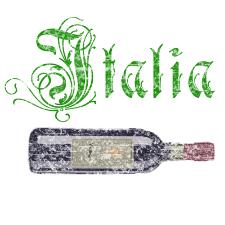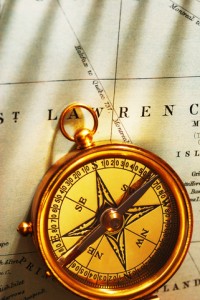by Lorri | Nov 9, 2011 | UnCorked
 Sangiovese, Nebbiolo and Barbera, despite their discreet natures, are sometimes called the “Italian Mob.” They earned this moniker because of their dominance in the Italian wine industry. Their hierarchy status rarely gets recognition on labels, and the wines take a back seat to the international familiarity of chardonnay and cabernet sauvignon. But these wines shouldn’t be ignored.
Sangiovese, Nebbiolo and Barbera, despite their discreet natures, are sometimes called the “Italian Mob.” They earned this moniker because of their dominance in the Italian wine industry. Their hierarchy status rarely gets recognition on labels, and the wines take a back seat to the international familiarity of chardonnay and cabernet sauvignon. But these wines shouldn’t be ignored.
Sangiovese has been associated with the inexpensive raffia-covered bottles sitting on restaurant tables around the world. But at its best, it is the grape behind Chianti from the Tuscany region.
These serious wines are brilliantly concentrated with earthy rich plum and black cherry, and because of their gripping tannins, they have the ability to age to perfection.
Nebbiolo, the famous grape behind the Barolo wine, is grown in Italy’s northwest region of Piedmont.
When compared to other grapes in this lineup, it is by far the most renowned for making aggressive, highly tannic red wines with alluring aromas and flavors — floral, roasted meats and spice.
Last but not least is the Barbera, which has played second fiddle to the Nebbiolo. Barbera grows throughout Italy, but it is in the vineyards of Piedmont that for centuries the most concentrated and complex examples of this grape have been grown. Its style can be fresh and fruity with cherry flavors or a full-bodied intense wine.
THE VALUES
- 2009 Cecchi Chianti Classico, Italy (about $15 retail)
- 2009 Da Vinci Chianti, Italy (about $21 retail)
- 2009 Michele Chiarlo Barbera d’ Asti, Italy (about $15 retail)
THE SPLURGES
- 2009 Santa Margherita Chianti, Italy (about $30 retail)
- 2009 Antinori Peppoli Chianti Classico, Italy (about $30 retail)
by Lorri | Apr 21, 2010 | UnCorked
 The wine world is full of many magnificent red grapes beyond the well known and popular. Just because hundreds of bottles of cabernet sauvignon and merlot line the retail shelves doesn’t mean other red grapes are inferior in flavor and quality. These “other” grapes are often hidden away in blends or from regions that don’t use a grape’s name on the label. But there’s no need to drink the same kind of wine day after day. Enjoy the classics but dare to explore the different.
The wine world is full of many magnificent red grapes beyond the well known and popular. Just because hundreds of bottles of cabernet sauvignon and merlot line the retail shelves doesn’t mean other red grapes are inferior in flavor and quality. These “other” grapes are often hidden away in blends or from regions that don’t use a grape’s name on the label. But there’s no need to drink the same kind of wine day after day. Enjoy the classics but dare to explore the different.
BARBERA
Barbera for centuries has played second fiddle to the more famous Italian grape, Barolo. Barbera grows throughout Italy, but it is in the vineyards of Piedmont that for centuries the most concentrated and complex examples of this grape have been grown. Today, the grape has extended well beyond its deep-rooted history into California, Australia and Argentina.
Barbera can be fresh and fruity with cherry flavors or made in a serious, full-bodied style with a plummy spice taste. And as with most Italian grapes, its high acid and soft tannins make it an almost perfect match with many foods.
THE VALUE
- 2007 Michele Chiarlo Barbera d’Asti, Italy (about $15 retail)
THE SPLURGE
- 2007 Renwood Barbera (Amador County), California (about $28 retail)
MALBEC
Originally from Cahors, France, malbec was traditionally used as a blending partner. Following a devastating frost in 1956, it never fully recovered, and most vineyards were replanted with grapes that had become more fashionable, such as merlot. But malbec found a new home in Argentina and Chile not as a blend, but as a thrilling single varietal. Its deep inky red color boasts lush fruit flavors with smooth tannins, making it easy to love. Since most South American wines are undervalued, it makes a tremendous bargain for wine drinkers.
THE VALUE
- 2007 Trapiche Malbec, Argentina (about $9 retail)
THE SPLURGE
- 2007 Francis Coppola Malbec, California (about $19 retail)
CABERNET FRANC
Cabernet franc is the father of the noble cabernet sauvignon (a cross with sauvignon blanc) but has never received much respect from the wine world. Perhaps it’s because, as with many French wines, consumers just don’t know which specific grapes are in the wine.
Cabernet franc is blended in many of the world’s finest wines — Chateau Cheval-Blanc, Ausone, Belair and Lefeur, to name a few. It’s used in blends to smooth and tame the aggressive and powerful cabernet sauvignon or to add a fragrant lift.
But it’s also mouthwatering on its own in The Loire Valley of France, the gracious home to this grape in Borgueil and Chinon. At its best, cabernet franc has fragrant aromas of black cherry, chocolate and violets and flavors of raspberries.
THE VALUE
- 2007 Remy Pannier Chinon Cabernet Franc, France (about $20 retail)
THE SPLURGE
- 2007 Alexander Valley Vineyards Cabernet Franc, California (about $24 retail)
 Sangiovese, Nebbiolo and Barbera, despite their discreet natures, are sometimes called the “Italian Mob.” They earned this moniker because of their dominance in the Italian wine industry. Their hierarchy status rarely gets recognition on labels, and the wines take a back seat to the international familiarity of chardonnay and cabernet sauvignon. But these wines shouldn’t be ignored.
Sangiovese, Nebbiolo and Barbera, despite their discreet natures, are sometimes called the “Italian Mob.” They earned this moniker because of their dominance in the Italian wine industry. Their hierarchy status rarely gets recognition on labels, and the wines take a back seat to the international familiarity of chardonnay and cabernet sauvignon. But these wines shouldn’t be ignored. The wine world is full of many magnificent red grapes beyond the well known and popular. Just because hundreds of bottles of cabernet sauvignon and merlot line the retail shelves doesn’t mean other red grapes are inferior in flavor and quality. These “other” grapes are often hidden away in blends or from regions that don’t use a grape’s name on the label. But there’s no need to drink the same kind of wine day after day. Enjoy the classics but dare to explore the different.
The wine world is full of many magnificent red grapes beyond the well known and popular. Just because hundreds of bottles of cabernet sauvignon and merlot line the retail shelves doesn’t mean other red grapes are inferior in flavor and quality. These “other” grapes are often hidden away in blends or from regions that don’t use a grape’s name on the label. But there’s no need to drink the same kind of wine day after day. Enjoy the classics but dare to explore the different.